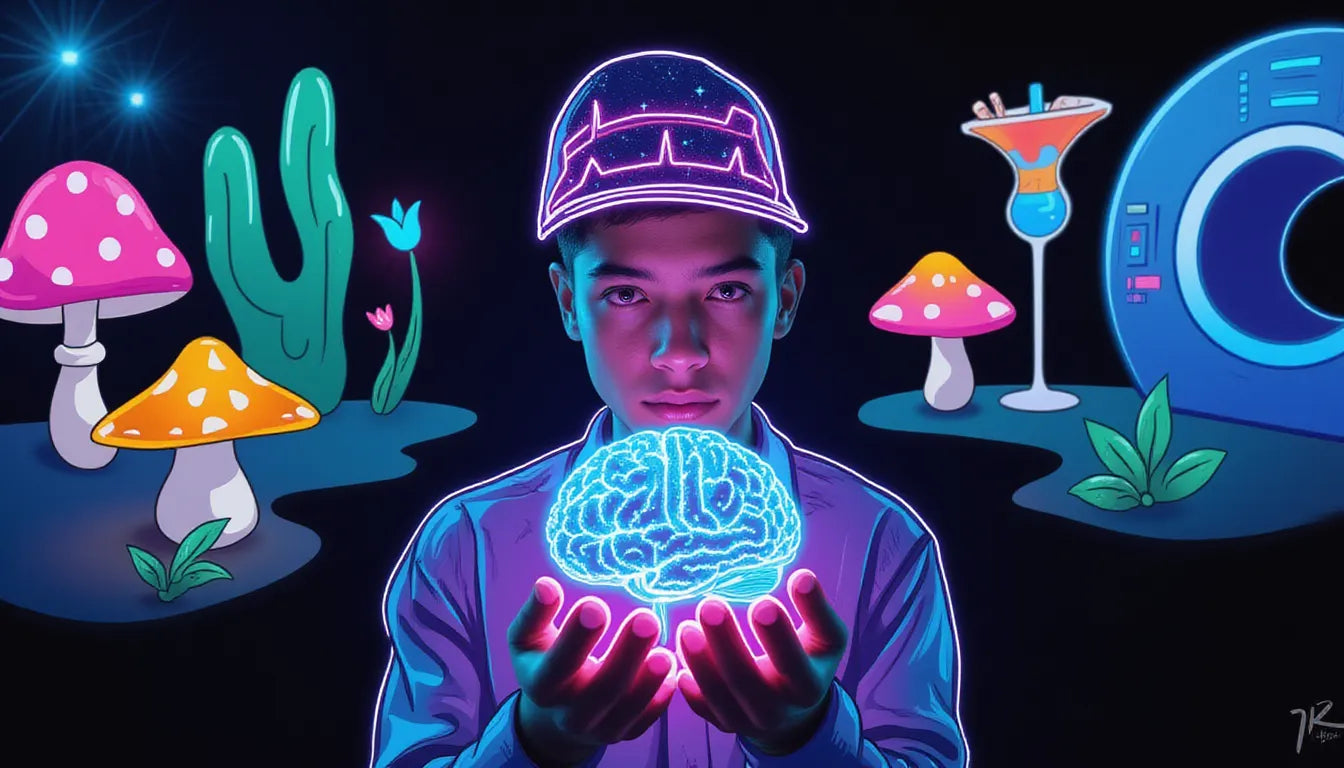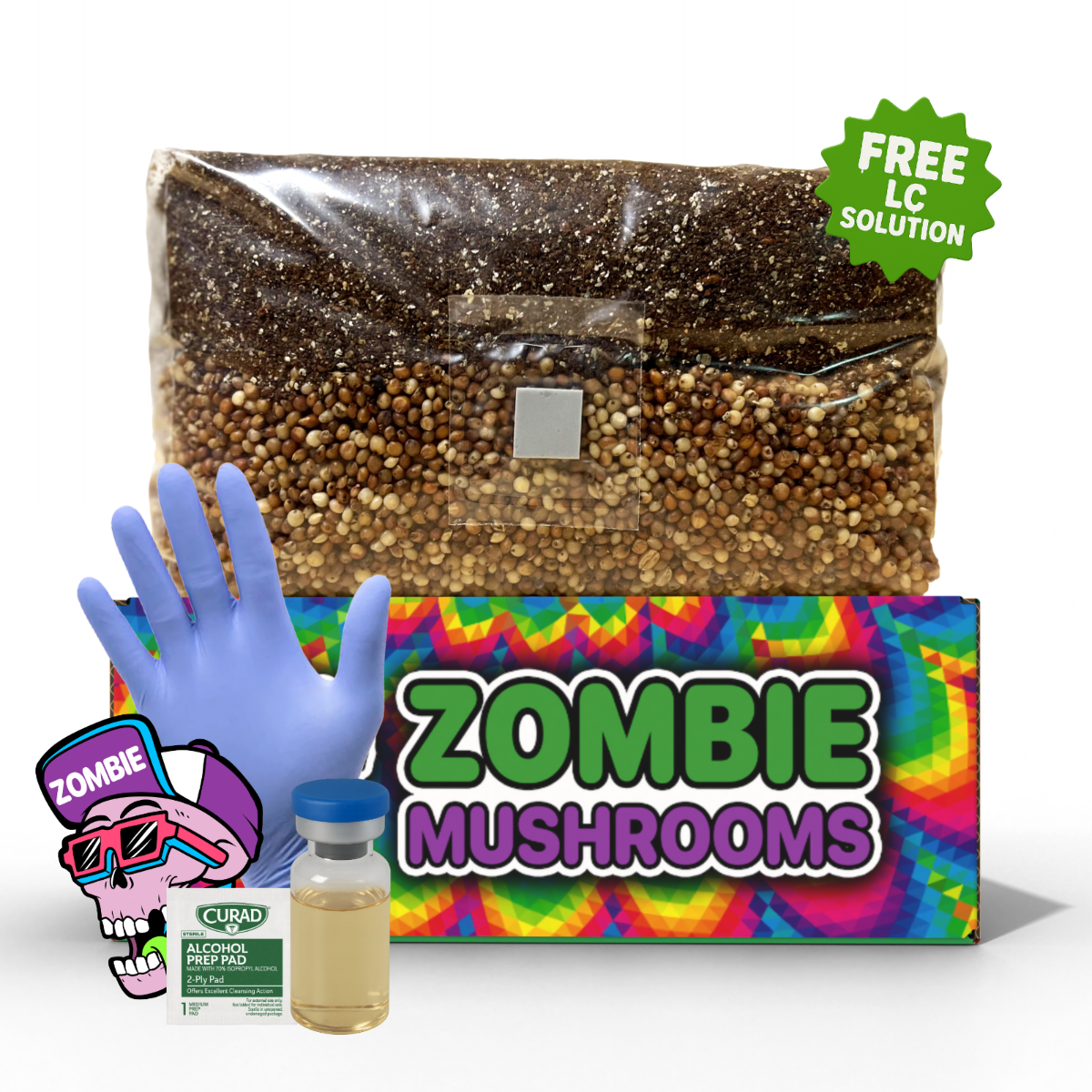⬇️ Prefer to listen instead? ⬇️

- DMT reduces "control energy," making the brain shift between mental states more fluidly.
- Brain areas with more serotonin 2a receptors show the biggest changes under DMT.
- EEG readings under DMT show increased signal diversity, pointing to richer consciousness.
- These psychedelic brain effects may help explain therapeutic benefits for depression or PTSD.
- Computational models successfully simulated DMT effects using placebo brain data and binding maps.
Psychedelics are again being used in neuroscience. They help us study consciousness and how the brain works. Among them, DMT (N,N-dimethyltryptamine) is known for working fast and having strong effects on how we see and think.
Recent research gives us important insights into how DMT changes brain activity and consciousness. It does this by lowering the brain’s "control energy"—the effort needed to switch between mental states. What we learned is very important for understanding DMT brain activity, DMT consciousness, and the wider effects of psychedelics being studied now for mental health treatment and how we think, with tools like liquid culture offering controlled ways to study fungal growth alongside these explorations.
What Is DMT?
N,N-Dimethyltryptamine (DMT) is a psychedelic substance found naturally in several plants. Some are used to make the Amazonian drink ayahuasca, like Psychotria viridis. The human body also makes small amounts of DMT on its own. This makes us wonder about its natural job in the body and consciousness.
Chemically, DMT is similar in structure to serotonin, the brain’s feel-good chemical messenger. Because it's built this way, DMT attaches strongly to specific serotonin receptors, especially the 5-HT2A receptor. This makes it cause strong psychedelic effects.
Other common psychedelics like LSD (which can last 8–12 hours) or psilocybin (4–6 hours) have effects that last much longer. But DMT's effects reach their strongest point fast—within seconds to minutes—and are gone almost as fast. When given into a vein, the whole experience lasts about 15 to 20 minutes. While it lasts, users say they are fully in a totally different reality. They see things that aren't there, feel like they are outside their body, and have deep ideas about life and existence.
Because it happens so fast, DMT is good for brain-imaging studies such as fMRI or EEG. Researchers can record brain activity while it's happening without the problems that come with psychedelics that last longer.

Studying Brain Activity During DMT Use: The Experiment at a Glance
A major 2024 study in Communications Biology looked for the specific ways DMT affects how the brain works and changes. The study, led by Singleton and others, had 14 people take part. They had two sessions spaced apart: one where they were given DMT into a vein, and another with a saline placebo. This setup where each person had both tests allowed researchers to compare brain activity directly when on the psychedelic versus when not.
For both sessions, people wore an EEG cap and had fMRI scans to check brain activity. Researchers gathered information over 28 minutes. This time included periods before, during, and after the DMT was given. Every minute, people rated how strong their experience was. This brought together objective brain data and what people reported feeling in the moment.
What really made this study different was using "network control theory." This is a way of thinking from physics and engineering that is now used for the brain. This theory sees the brain as a system that changes. It takes different amounts of effort to move into different states of activity.
Using this theory, scientists could measure how much “energy” the brain used to switch between mental states. This was like measuring how flexible the brain was at a physical level.

Control Energy: The Brain’s Inner Workload
Normally, the brain has to put in effort to move between states like paying close attention, recalling memories, or handling what our senses take in. This effort is called “control energy.” It shows how much brain networks naturally resist changing.
Using network control theory and brain structure models from diffusion MRI, researchers checked how DMT affected this control energy. The results clearly showed that control energy went down a lot when on DMT.
In simple words, the brain moves more freely and easily. It can flow between different ways of thinking and seeing without the limits usually set by its physical structure or normal brain paths. This lower energy level suggests that DMT makes the brain work like a system that's changing constantly and has almost no resistance. The stiffness needed for steady ways of thinking or focusing breaks down. This allows consciousness to shift in ways that are sudden, creative, and often changing quickly.
What this means is very important for understanding DMT consciousness. The changed state isn't random; it's something measurable that happens because the brain resists change less.

How DMT Creates a More Flexible Brain
People in the study often described feelings that fit how their brain had become more flexible. These included strong visual hallucinations, time and space seeming different, feeling outside their body, and the well-known "ego death." What people reported feeling matches what the brain science measurements showed.
Less control energy means more brain entropy, or disorder. Researchers are starting to see this quality as helpful in psychedelic states. When the brain is disordered in this way, it's not working poorly. It's set free from old, fixed ways of working, making room for new views, understandings, and ways to deal with feelings.
This flexibility breaks apart what neuroscience calls the "default hierarchy." This is a system where some thinking processes are stronger than others. On DMT, how stiff that hierarchy is goes away. Brain networks that don't often work together when we are normally conscious now connect. This creates a brain area that is “hyperconnected” and more equal.
These changes in how the brain works help explain why DMT and other psychedelics might be useful in treating depression, addiction, and PTSD. These conditions often involve fixed ways of thinking and old, hard-to-change behaviors.

Serotonin 2a Receptors: The Psychedelic Gateway
Much of DMT’s effect comes from how it acts on the serotonin 2a (5-HT2A) receptor. This is a protein receptor found a lot in certain brain areas. These receptors are key to the psychedelic experience caused by substances like LSD, psilocybin, and mescaline.
Using PET brain maps to find where there were the most 5-HT2A receptors, researchers showed exactly where DMT had the biggest effect. Brain areas with more of these receptors, mainly in the cortex, had the biggest drops in control energy. This link confirms that 5-HT2A receptors work like gateways. They make psychedelic effects stronger exactly where they are easiest for the body to reach.
It's worth noting that these receptors are mostly found in association cortices. These are parts of the brain that put together sensory information, handle complex thinking, and are involved in knowing who you are. So, it's not surprising that DMT changes how we see reality, time, and our sense of self.
Understanding this connection between brain chemistry and experience is key to truly understanding how DMT consciousness works. Changed states are not just mystical ideas. We can map them to specific events in the brain—and maybe use them to help people feel better.

Brain Networks Most Affected by DMT
The human brain has many networks, each doing different jobs. While on DMT, some of these brain systems were changed more clearly and sooner than others:
Visual System
Later in the session, the visual part of the brain became more active. This fits well with what users said they saw: complex patterns, changing colors, and clear, almost too real images. This isn’t just imagining things. It's more brain activity in the parts that handle vision.
Frontoparietal Network
This network is active earlier when on DMT. It controls attention, making choices, and short-term memory. It being changed early might explain the feeling of “letting go,” as thinking control is given up and attention spreads out more.
Default Mode Network (DMN)
This network is usually linked to thinking about yourself and your own thoughts. In psychedelic studies, this network often shows less connection when people take substances like psilocybin and LSD. DMT did something similar. It led to the sense of where 'you' begin and end falling apart. This is called ego dissolution, and many users say it feels freeing or like a release.
The way these networks react one after another suggests that DMT doesn't just affect the whole brain the same way. Instead, it leads the brain through different steps, each with its own way of seeing things and feeling.
Expanded Consciousness and Signal Diversity
To support what they found with brain imaging, the researchers also took EEG data. This method measures the brain's electrical activity down to the millisecond.
On DMT, EEG signal diversity went up a lot. This means the brain's electrical patterns became much less easy to guess and more complex. This is called neural entropy. It's strongly linked to the psychedelic state and is now being studied as a sign of wider consciousness.
What's interesting is that people who had the most signal diversity—meaning their brains were in the most free, changing states—also needed the least control energy. The link between how easily the brain moves and how deep the experience is suggests that complex activity goes along with strong experiences.
Signal diversity might not just be something seen in the data. It could be a sign that points to something useful for therapy and getting past psychological blocks.

Simulated Psychedelics? Predicting DMT Effects with Models
As an interesting next step in this work, the scientists put in fMRI data from the placebo sessions. They combined this with maps showing where serotonin 2a is found and models of how DMT breaks down and moves in the brain. When they ran this through computer programs, the brain activity they predicted was very close to what they saw when people actually got DMT.
This way of doing things suggests a big change for the future. We could copy the effects of a psychedelic substance on a human brain before we give it to someone. Such tools that can predict things could help make treatments right for each person, lower risks, and find the best doses or substance mixes for helping with mental health issues.
While we are still far from “digital psychedelics,” this research shows that the idea works and is strong proof.
What This Means for Psychedelics and Mental Health
One of the most exciting parts of this work is what it might mean for treating mental health issues. Problems like major depression, PTSD, anxiety, and addiction are linked to the brain being stiff, going over the same thoughts again and again, and having feelings that don't change easily.
Unlike medicines used now, which often work slowly or just dull the symptoms, DMT seems to free the brain from these fixed paths fast. Lowering control energy might let the brain get out of its usual paths and make new connections. This could open up ways for people to understand things and heal.
Many studies with psilocybin have already shown this could work. Now, DMT might become part of how we talk about therapy. Not as a long, deep experience, but as a short change that makes a difference. Used with talk therapy, it could give quick resets for people who are struggling.

Where Does Psilocybin Fit In?
Psilocybin, another psychedelic substance, also works on the serotonin 2a receptor. It shows many of the same brain effects as DMT, like more signal diversity and less connection in the DMN.
However, psilocybin experiences happen over several hours. This allows people to work through feelings and create meaning over a longer time. This makes it often used in therapy settings, where putting the experience together with your life and talking about it are important.
At Zombie Mushrooms, we see psilocybin as something interesting for science and something that has been used for natural healing for a long time. Our grow kits give people an easy way to learn about fungi—without going into full psychedelic states.

Limitations of the Study (But Still a Big Deal)
Every scientific study has its limits. This study had a small number of people—just 14. It used average brain structure scans for the group, not maps for each person. Using custom brain connection maps might give more exact understanding in future models.
Also, the study was single-blind. People might have guessed if they got the placebo or DMT. This could have changed what they reported feeling.
Even so, using many ways to measure things—like EEG, fMRI, PET maps, and computer models—makes this study a very important piece of research.
Final Thoughts: Consciousness, Mushrooms, and the Future
What we learned from this study of DMT brain activity and DMT consciousness helps move neuroscience forward. It opens doors for future research on psychedelic brain effects that can change mental health and how we understand philosophy.
As technology gets better and the negative view of psychedelics changes, the next decades might bring both lab-made copies and medical treatments based on these changed states. DMT is more than just a substance. It's like a key to new levels of brain flexibility, consciousness, and how we might heal.
At Zombie Mushrooms, we really care about making this curiosity real. We do it legally, safely, and with respect for science and nature. From growing mushrooms to asking deep questions about the mind, your start is with a spore.
Citations
- Singleton, S. P., Timmermann, C., Luppi, A. I., Eckernäs, E., Roseman, L., Carhart-Harris, R. L., & Kuceyeski, A. (2024). Network control energy reductions under DMT relate to serotonin receptors, signal diversity, and subjective experience. Communications Biology, 7, Article 314. https://doi.org/10.1038/s42003-025-08078-9



